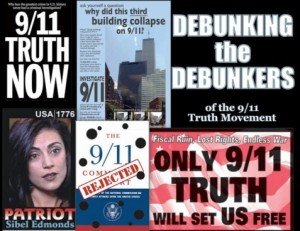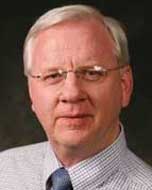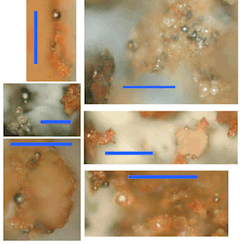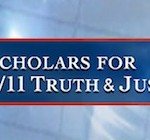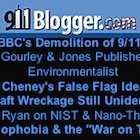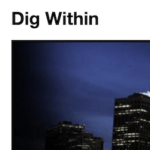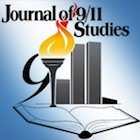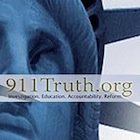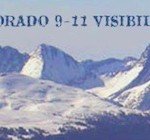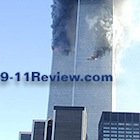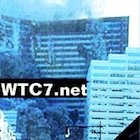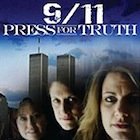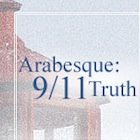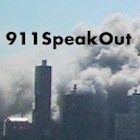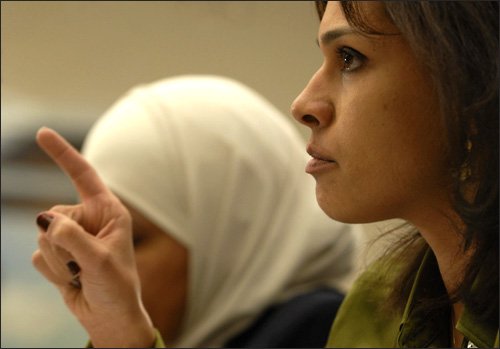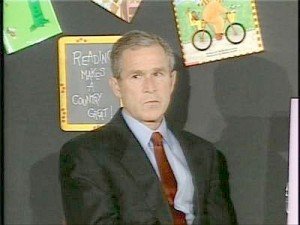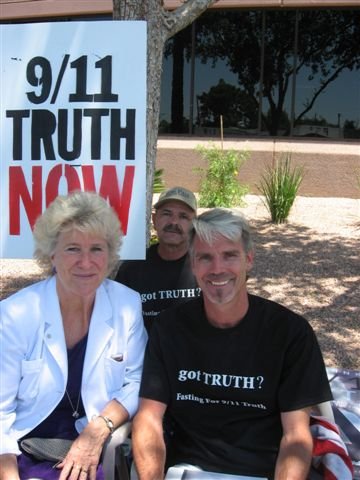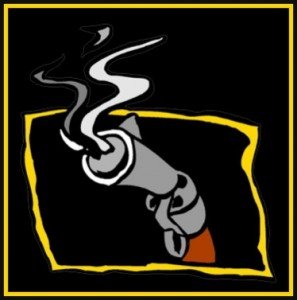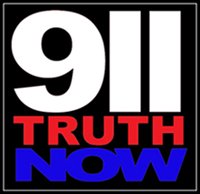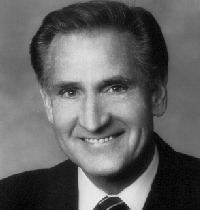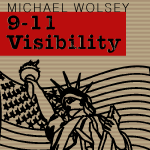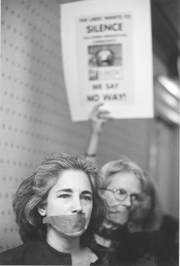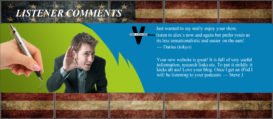Source: harpers.org
By Benjamin DeMott
October 2004
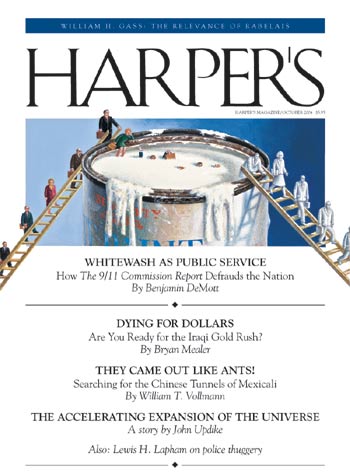 No book in memory has stirred greater anticipatory frenzy than The 9/11 Commission Report—or more universal acclaim at its appearance in July. Before it was out, news and interview shows were welcoming the Commissioners whose labor had produced it. CNN ran film footage of copies tumbling off printer-plant conveyor belts. Stores reported overnight sellouts of their orders. Officialdom, Republicans and Democrats, spoke of the work as magisterial. David Brooks hailed its “moral aura” on PBS’s NewsHour with Jim Lehrer. The President himself—at one time he not only had declined an invitation to answer the Commission’s questions but had opposed the Commission’s creation—praised the work as “very constructive,” and he and the Vice President commenced citing it in speeches; so did John Kerry. By mid-August, 630,000 copies, priced to move at $10, had been sold.
No book in memory has stirred greater anticipatory frenzy than The 9/11 Commission Report—or more universal acclaim at its appearance in July. Before it was out, news and interview shows were welcoming the Commissioners whose labor had produced it. CNN ran film footage of copies tumbling off printer-plant conveyor belts. Stores reported overnight sellouts of their orders. Officialdom, Republicans and Democrats, spoke of the work as magisterial. David Brooks hailed its “moral aura” on PBS’s NewsHour with Jim Lehrer. The President himself—at one time he not only had declined an invitation to answer the Commission’s questions but had opposed the Commission’s creation—praised the work as “very constructive,” and he and the Vice President commenced citing it in speeches; so did John Kerry. By mid-August, 630,000 copies, priced to move at $10, had been sold.
I shared the anticipation—looked forward to the work, badly wanted it, felt excited when I got it in my hands. After years of resistance, leaks, party scraps, feuds, advantage-grabbing, and junk punditry, this plump, red-white-and-blue paperback with the U.S. seal on the cover (567 pages, including a hundred-plus pages of footnotes) had to be the real thing. Some 2,500,000 pages of documents had been sifted, public testimony taken from 160 different witnesses, 1,200 knowledgeable persons interviewed in ten countries (including every top official from two U.S. administrations whose jobs involved intelligence, law enforcement, diplomacy, immigration, aviation, border control, congressional oversight, you name it). And after twenty long months working with a staff of close to eighty, the ten Commissioners of the National Commission on Terrorist Attacks Upon the United States—five Republicans, five Democrats, ex-senators, governors, cabinet secretaries, big-time lawyers—had all signed on.
On television during the nineteen days of hearings, several of which I watched for hours on end, the Commissioners came across as wised-up but with nothing dark inside to hide or atone for. Not cut from the same mold but genuine in separate ways. Philip Zelikow, the executive director, wasn’t a favorite, I admit; letter perfect and Sunday-school-scrubbed, he was a shade too natural a condescender. But the others . . . Bob Kerrey had earned with blood and limb the right to his Huck Finn “swears” and overplayed poses. Chair Thomas H. Kean’s seamed, cherubic face and smiling refusal ever to take offense sorted well with Vice Chair Lee H. Hamilton’s stern-Grandpa, hands-clasped stoniness. James R. Thompson and Fred F. Fielding often suspected headline greed in their Commission midst, but they had seen enough of it in their time to know how to pretend not to notice. Richard Ben-Veniste: wordy but dogged and blessedly bright. When Attorney General John Ashcroft commenced damning Jamie S. Gorelick—lady of constant expectation, splendid preparation, and fine eyes—I thought it silly for her colleagues, bipartisan gallants, to rally round as though she had bid for or needed protectors.
But no matter. The report itself was now what counted—the book alone capable of fulfilling the hopes set upon it. The book was offered by W. W. Norton, last of the great American publishers, somehow still thriving without imitating the schlock houses that choke celebrities with multimillion-dollar advances and then choke retail outlets with taped sleaze (no window space for writers). I sat down with the book believing there was no way The 9/11 Commission Report could fail to produce answers.
This was the promise, after all: answers. Answers in return for serious attention. In the preface, Thomas Kean and Lee Hamilton claimed that the body of the text would “identify lessons learned” from the long stretch of study, interviews, debate, meditation. The implicit guarantee was that ahead lay a work of analysis addressed to an intelligent democratic citizenry—an inventory of possible causes of the tragedy followed by a reasoned-out, sober set of judgments about which of these causes were most plausible.
The promise was not kept. The plain, sad reality—I report this following four full days studying the work—is that The 9/11 Commission Report, despite the vast quantity of labor behind it, is a cheat and a fraud. It stands as a series of evasive maneuvers that infantilize the audience, transform candor into iniquity, and conceal realities that demand immediate inspection and confrontation. Because it is continuously engaged in scotching all attempts to distinguish better from worse leadership responses, the Commission can’t discharge its duty to educate the audience about the habits of mind and temperament essential in those chosen to discharge command responsibility during crises. It can’t tell the truth about what was done and not done, thought and not thought, at crucial turning points. The Commissioners’ immeasurably valuable access to the principals involved offered an extraordinary opportunity to amass material precious to future historians: commentary based on moment-to-moment reaction to major events. But the 567 pages, which purport to provide definitive interpretations of the reactions, are in fact useless to historians, because a seeming terror of bias transforms query after commissarial query—and silence after silence—into suggested new lines of self-justification for the interviewees. In the course of blaming everybody a little, the Commission blames nobody—blurs the reasons for the actions and hesitations of successive administrations, masks choices that, fearlessly defined, might actually have vitalized our public political discourse.
At the core of all these failures lies a deep wariness of earnest, well-informed public debate. And the wariness is rooted, clearly, in a conception of the nature of citizen virtue that (1) strips the critical instinct of its standing as essential equipment for the competent democratic mind, and (2) finds merit in the consumer credulity that relishes pop culture and shrugs off buyer-beware warnings. The ideal readers of The 9/11 Commission Report are those who resemble the Commission itself in believing that a strong inclination to trust the word of highly placed others is evidence of personal moral distinction. As the Report’s project becomes ever more visibly that of sanctifying equivocation and deference, the Commissioners retreat ever further from evaluating the behavior of which their interviews and research nonetheless allow brief glimpses—behavior on which fair judgments of character and intelligence could and should have been based. Issues of commitment and responsibility are time and again reconfigured as matters of opinion, or as puzzles of memory, or as pointlessly distracting “partisan” squabbles. See, here it is again, says the Commission’s undervoice. People differ, of course. But of course. And they believe with the utmost sincerity in their own account of events. And they are all honorable men and women. Little can be gained, therefore, by assessing, weighing, in the end pronouncing this position—this version—superior to that. Reader, given our shared probity and undoubted concern for the future of the Republic, let us think process and structure, forgoing Blame Games. Let us look to the future. We need to move on.
THE NOBODY TOLD ME SCAM
There’s little mystery about why the Commission is tongue-tied. It can’t call a liar a liar.
The most momentous subject before the 9/11 Commission was: What did President Bush know about the Al Qaeda threat to the United States, when did he know it, and if he knew little, why so? The Commission reports that on several occasions in the spring and summer of 2001 the President had “asked his briefers whether any of the threats pointed to the United States.” The Commission further reports the President saying that “if his advisers had told him there was a [terrorist] cell in the United States, they would have moved to take care of it.” Facing his questioners in April 2004, the President said he had not been informed that terrorists were in this country.
Conceivably it was at or near the moment when Bush took this position that the members of the Commission who heard him grasped that casting useful light on the relation between official conduct and national unpreparedness would be impossible. The reason? The President’s claim was untrue. It was a lie, and the Commissioners realized they couldn’t allow it to be seen as a lie. Numberless officials had appeared before the whole body of the Commission or before its aides, had been sworn in, and had thereafter provided circumstantial detail about their attempts—beginning with pre-election campaign briefings in September, through November 2000, and continuing straight through the subsequent months—to educate Bush as candidate, then as president-elect, then as commander in chief, about the threat from terrorists on our shores. The news these officials brought was spelled out in pithy papers both short and long; the documentation supplied was in every respect impressive.
Nevertheless the chief executive, seated before the Commission, declared: Nobody told me. And challenging the chief executive as a liar entailed an unthinkable cost—the possible rending of the nation’s social and political fabric.
The interior mind of the 9/11 Commission is closed to intruders; only the arrogant would presume to “know” its inner response to this denial. But you cannot grasp the meaning of the Report without trying first to understand that response. And it’s no mistake to start by imagining the content of any ordinary person’s feelings who had been present at the denial and was well informed, prior to the meeting, on the relevant subjects. Incredulous embarrassment, surely. Pity. A glance turned protectively away, to the middle distance, from the witness. A dawning of helplessness in the face of the insuperable obstacles now blocking the path to clarification of responsibility and thorough analysis of the causes of the tragedy. We cannot know with any certainty what emotions or disappointments the Commission members actually felt, but the pertinent facts underlying their probable dismay lie far beyond dispute—far beyond off-the-rack accusations of prejudice and preconception. The record speaks. George W. Bush met reluctantly with the Commission, and on condition that the Vice President be permitted to accompany him, that the interview not be recorded, and that it take place in the Oval Office.
A significant portion of the Commission’s questions during the session, which occurred on April 29, 2004, dealt with what the President made of the Presidential Daily Brief, headed “Bin Ladin Determined to Strike in US,” that he received, in Crawford, Texas, on August 6, 2001, less than five weeks before the 9/11 disaster. (See page 40, where the relevant text is reprinted in its entirety.) In accordance with the agreement, the Report sets forth the President’s reflections in indirect discourse, as follows:
The President told us the August 6 report was historical in nature. President Bush said the article told him that al Qaeda was dangerous, which he said he had known since he had become President. The President said Bin Ladin had long been talking about his desire to attack America. He recalled some operational data on the FBI, and remembered thinking it was heartening that 70 investigations were under way. As best he could recollect, Rice had mentioned that the Yemenis’ surveillance of a federal building in New York had been looked into in May and June, but there was no actionable intelligence.
He did not recall discussing the August 6 report with the Attorney General or whether Rice had done so. He said that if his advisers had told him there was a cell in the United States, they would have moved to take care of it. That never happened.
The depersonalizing steno-stream mode in which these remarks are reported represents them as proceeding fluidly from topic to topic, consecutive and reasoned, and rousing no impulse to interrupt. But open a space, line by line, sentence by sentence, for informed response (after months of earnest study, the Commissioners qualified at the very least as informed), and questions flow in—and with them a sense both of the urgent need for critique and of the barriers preventing that need from being met:
The President told us the August 6 report was historical in nature.
Each paragraph of the Bin Laden briefing is directed not at the past but at the present or the future. Talk of “bring[ing] the fighting to America,” or of “planning . . . to mount a terrorist strike”—together with the comment that “Bin Ladin . . . prepares operations years in advance” and that “Al-Qa’ida . . . maintains a support structure that could aid attacks”—focus on today and tomorrow. If the Commission means to serve fact, it will have to speak in its Report to correct the presidential error and to establish that the briefing clearly aimed to warn him of what lay ahead. But how can it speak to that end? In what language or tone can an attempt be made to apprise the country of a fateful error by the leader pledged “faithfully” to protect us—a leader still evidently incapable even of recognizing the error?
President Bush said the article told him that al Qaeda was dangerous, which he said he had known since he had become President. The President said Bin Ladin had long been talking about his desire to attack America. He recalled some operational data on the FBI, and remembered thinking it was heartening that 70 investigations were under way.
The Commissioners’ absolute imperative here and now is to proceed cautiously. Their obligation as citizens charged with telling the truth to their fellow citizens is to compare and contrast what the President is saying with what the Commission already knows. The Commissioners must not silence their questions. As self-respecting leaders aware of the trust their vouchers will bear, they must affirm their own habits of self-doubt, their willingness to check their memory, their readiness to concede that they could have misheard or misconstrued. But they must not self-censor appropriate questions, must insist on candor, must not accept words for deeds. What then were the main assertions?
The President said that the briefing paper told him “al Qaeda was dangerous,” that he had known this since he became president and known too that “Bin Ladin had long been talking about his desire to attack America,” and that he was heartened by news of “70 investigations” under way.
The Commissioners have heard that Bush received more than forty briefings naming Al Qaeda as a danger. They have learned from authoritative inquiries conducted in 2002 that nothing remotely resembling seventy investigations had been launched by the FBI. They are well informed about the surprisingly relaxed presidential response to the danger—a danger of which Bush claimed full cognizance. They know this response consisted of two letters to the recently installed leader of a foreign country and the voicing of irritation to aides about his thwarted yearning to “take the fight to” the insect life called terrorists. The letters the President signed were addressed to the president of Pakistan, were drafted for him by the State Department, and dealt with “a number of matters,” including a request for “support in dealing with terrorism.” The President expressed himself to National Security Adviser Rice in March or April of 2001 as “‘tired of swatting at flies’” and, on the same occasion, declared that he wanted “to play offense. . . . [wanted] to take the fight to the terrorists.” In May 2001 the President announced that the Vice President would head a task force to review “general problems of national preparedness,” including management of any domestic attacks by WMD.
Nothing happened. No task-force review had begun by 9/11. Musharraf’s response to the letters was negative. No flies were swatted. The Commission knows, in other words, that no “action” was taken for the purpose of protecting the American citizenry from the fresh dangers fully described to the President over the immediately preceding months. It knows, in addition, that before 9/11, and in the frantic days afterward, departmental secretaries and undersecretaries were pressing—inexplicably but unrelentingly—for the bombing of Iraq, in meetings with, and in briefings written for, the President. And it knows that Bush himself was seeking justification, from his counterterrorism chief, for an attack on Saddam.
If the Commission means to serve fact, it simply cannot avoid addressing in this Report the gap between avowed presidential awareness of domestic terrorist danger and actual presidential impassivity. It will have to draw on its own resources for insight into whether the President assessed Bin Laden as a toothless blustering braggart, whether he shared Attorney General Ashcroft’s reported view that warnings about Al Qaeda were tiresome and needless, whether he now understood that he most assuredly should have asked questions about the “heartening” seventy investigations, and—most excruciating—whether the President as they questioned him had yet come to realize that the hijackings, the collapse of the Towers, the enormous toll at the Pentagon and elsewhere, might have been prevented had more dutiful, responsible attention been paid to the urgent exhortations from the experts in his service.
[The President] did not recall discussing the August 6 report with the Attorney General or whether Rice had done so. He said that if his advisers had told him there was a cell in the United States, they would have moved to take care of it. That never happened.
The President asserts that no adviser told him about a cell and, further, that on several occasions in spring and summer 2001 he “asked his briefers whether any of the threats pointed to the United States.” The August 6 briefing paper states without ambiguity that a cell—people behaving as members of a cell—existed at that time. The record clearly establishes that George W. Bush was told repeatedly, from September 2000 onward, of precisely such threats. The Commission knew that experts—terrorism specialists who worked around the clock (often taking three meals a day at their desks)—had composed hair-burning tirades, had dared at length to “scream” unavailingly for attention, and had finally begged in despair to be relieved of posts rendered utterly meaningless by their superiors’ unresponsiveness.
In September 2000, before the election, John McLaughlin, then acting deputy director of the CIA, camped at Bush’s ranch in Texas with a CIA team bringing the harrowing message. Ben Bonk, deputy chief of the CIA’s Counterterrorist Center, was among the experts who told Bush that Americans would die in terrorist acts led or inspired by Bin Laden during the next four years. Authoritatively assembled material was submitted to the Bush/Cheney transition team spelling out the fact that “al Qaeda had ‘sleeper cells’ in more than 40 countries, including the United States.” An attachment to this paper, submitted in January 2001, focused on “al Qaeda’s presence in the United States.” When James Pavitt, CIA deputy director for operations, briefed the president-elect at Blair House, he described Bin Laden as “one of the gravest threats to the country.” Bill Clinton told Bush in a two-hour session on national security: “‘I think you will find that by far your biggest threat is Bin Ladin and the al Qaeda.’” Clinton spoke as one who had lived through a rain of jihadist bombs—the Black Hawk Down incident, the African embassies, the Cole, the Millennium Threat, among them. Bush later said that he “felt sure President Clinton had mentioned terrorism, but did not remember much being said about al Qaeda.” All this is in the Report for anyone to see.
Given the evidence, the Commissioners who meant to serve fact—meant truly to foster the future security of this country—would have had to confront, through words and acts, the gap between the President’s absurd, nobody-told-me assertions and the plain record before them of repeated attempts to draw his attention away from Iraq to the threat that closed the very street on which he and his family lived. They would have been forced to raise the question, to themselves and to their audience, of whether this level of ignorance and obliviousness, this much incontrovertible proof of neglect and indifference, could be passed over in silence by men and women of patriotic good conscience. They would have been forced to admit to themselves that they knew what they knew.
And what about the other problem—the problem of self-reference? Put bluntly, what about themselves? People do not take up posts on such a Commission as this, in middle or late life, with the expectation of being abused and condemned as party hacks, too mean and narrow to rise above local loyalties. Hope whispers in the Commissioner’s ear that a statesman’s status can be achieved—a generous, large-souled identity deserving historical mention.
And therefore the previous questions return in a different key. Can the status of statesman be won if the Commissioners assert themselves as dead-serious, fact-finding interrogators? Can the Commissioners speak even to one another, privately, about their need to confront executive malfeasance without becoming, after months of painfully disciplined self-bracing against partisan self-indulgence, provokers of partisan fury? Would they not inevitably dwindle into yet another collection of squabbling defectives dealing in sly insinuations and rightfully dismissed as “merely political”? And is it, finally, impermissible, after twenty months of hard labor, to think not only of protecting the Republic and the President but to think at last of themselves?
With that question, perhaps, came clarity: better to silence disquiet, dissatisfaction, disbelief, than to voice them. The interest neither of nation nor of career would be advanced by rancorous quarrels about lies and cover-ups. The overriding need was to move on.
WE ARE ALL GUILTY
Both the mission and terms of the Report were dictated by this clarity and this need. The Commission’s evasions, silences, and suppressions of doubt during the ninety-minute Bush-Cheney session led directly to an array of other suspicion-stirring evasions and silences. The necessity thereafter was to construct a Report whose parts would move together toward two tightly interconnected goals: (1) sweeping questions of presidential character off the table and (2) presenting the Commission’s equivocation as the result not of cowardice but of rational recognition of the power of the contingent, imponderable, and impersonal in human life. What the Commissioners had to supply amounted to an alibi, both for the President and for themselves.
Debate will center in time, among scholars, on whether the Report’s public success derived from exceptionally clever narrative management or from the intense monitoring of each of its sentences in order to cleanse the Report of any partisan utility whatsoever. My view is that the aura now surrounding the document and the public servants who produced it derives from growing incomprehension, in contemporary America, of the essential human cause—the progressive curve of human development—that democracy is meant to forward.
But what matters is that the situation the Commissioners faced following the Bush-Cheney interview required, and was met with, a strategy that generated plausible grounds for not spelling out questions, not seeking answers. Only if such grounds were visible could the Commission protect itself from the charge that for no cause it was treating dismissively those who, face-to-face with their superiors, did spell out questions, did seek answers. Only if such grounds were established could the Report ward off complaints that it had wrongly failed to confront not only the original untrue assertion (nobody told me) but virtually every other presidential assertion or action or inaction that warranted objection.
Those objectionable assertions and behavior succeed one another, in number, throughout the Report, and a few are quite familiar, but nevertheless they bear reminder here:
The President explains that it was in order to “project strength and calm” that he remained for five to seven minutes in a children’s classroom after being told that the nation was under attack. The Report passes over this mindless explanation without cavil.
Details in the President’s, Vice President’s, and other accounts of the framing and delivery of the “presidential” order to shoot down the hijacked airlines inspire severe doubt that the order came from Bush himself, rather than from an official—Vice President Cheney—with no military authority. The Commission’s fudging summary declines to discuss relevant issues of alertness and awareness of constitutional obligations.
When, because an insider has managed to put into print noticed criticism of the Bush performance, the Commission has no alternative except to acknowledge the existence of a critical perspective, it marginalizes and deprecates the critic. Richard Clarke’s charge that Bush attempted to “intimidate” him into finding a link between Saddam and the 9/11 catastrophe, for instance, is placed not in the body of the text but in a footnote located seven pages from the end of the book. Readers learn in the body of the text that Clarke’s portfolio was contemptuously referred to as “drugs and thugs”; his fierce, pre-9/11 attempts to force attention on Al Qaeda rather than on Iraq are labeled “jeremiads.”
When the Commission must cope with material that conceivably will give rise to renewed accusations that Bush and his administration are mere agents of corporate greed, it speaks as though corporate policy is shaped solely by missionary desire to perfect services in accord with public demand. The bottom-line fixations of commercial airlines and security services—corporate entities that bear awful responsibility for the tragedy—go unmentioned. Concern for efficient transport is ceaselessly trumpeted.
When the sheer quantity of fully articulated messages of alarm warning Bush of imminent, possibly “calamitous,” domestic terror attacks edges the Commission toward acknowledging its inability to locate Bush’s articulated responses, it presents presidential fits of pique (“tired of swatting at flies”) as “policy directives.”
And so it goes—an array of doublespeak renamings, ill-accounted-for deprecations, evasions, silences, all demanding some kind of justification. The Report meets this demand with a shrewdly conceived and sustained equity-of-blame argument that becomes the fulcrum of the entire document and has a single principle at its center: any blame that might be apportioned to the behavior of the sitting administration is easily counterbalanced by the behavior of preceding authorities—and by historical “fact” as interpreted in accordance with current presidential and commissarial need.
Skewed history is indeed the key element in the operation of the Report’s argument. In these pages history is in part an excessively circumstantial rehearsal of failed attempts by the United States, over the decades, to conduct effective initiatives against terrorist plots. (Remember Robert MacFarlane, national security adviser when hostages were taken in Iran; remember Carter’s “Desert One”; remember Clinton’s Somalia disaster.) The question implicit is clear: How can anyone who obeys the injunction to remember the past fault this sitting administration when so many others have failed so miserably? History in the Report is partly a record of refusals by previous authorities to support efforts to strengthen the CIA. (If Bush is guilty of inattentiveness to CIA briefing papers, Clinton is guilty of refusing to back legislation strengthening the CIA.)
History is also partly a minutely examined series of so-called “missed opportunities” during the Clinton years—chances, that is, to take out Al Qaeda, assassinate Bin Laden, receive an imprisoned Bin Laden as a gift from Sudan, bomb his training sites, conduct “rolling attacks” on his Afghan bases, destroy his weapons-building capacity (a nerve-gas factory in Sudan), wipe out his networks. The Commission acknowledges the constraints on Clinton, including the wag-the-dog accusation ultimately levied that by sending cruise missiles into Afghanistan and Sudan he was seeking to change the subject from Monica Lewinsky. Further constraints run the gamut from a dearth of solid intelligence about Bin Laden’s whereabouts to sane anxiety about collateral casualties to the certainty that, absent clear proof (lacking in the period specified) of Al Qaeda?inflicted casualties on U.S. citizens, the Muslim world would damn such action as unprovoked and savagely invasive.
Yet the Report weighs these constraints lightly, making space for numerous remarks attacking Clinton for failure to act, including a harsh judgment, by the racist Lt. Gen. William Boykin, that “‘opportunities were missed because of an unwillingness to take risks and a lack of vision and understanding.’” And the Commission nowhere spells out for the reader the pertinent facts that exploitable opportunities simply did not exist in the Clinton years, though the White House searched indefatigably to find one, and that speaking or writing as though the opposite were true, as though opportunities abounded, contributes nothing to clarity, only clears yet another stage on which the Commission can develop and improvise on its equity-of-blame theme. Clinton’s prudent hesitation to strike Bin Laden, in other words, becomes the moral equivalent of Bush’s lack of concern, even post-9/11, about Bin Laden.
By far the most striking Commission improvisation on this theme occurs in the treatment of the USS Cole episode. The bombing of the ship took place on October 12, 2000 (seventeen crew members were killed). The Bush-Gore election occurred on November 7, 2000. The Report observes dryly that “there was a notable absence of serious discussion of the al Qaeda threat” during the campaign. It’s entirely obvious that a lame-duck counterattack could not be launched with the Florida debacle in midcourse; less obvious is that no definitive evidence had yet come to light tying the bombing to Al Qaeda/Bin Laden. Intricately prepared for and justified, the major plank of the Commission’s argument that responsibility for the 9/11 disaster can’t be laid at any one door is that the “failure” of President Clinton to respond to the bombing encouraged Bin Laden to go forward with his attack on America—which is to say, the “failure” itself qualifies as a hidden or secret cause of the attack.
And this becomes the heart of the Commission’s case for equivalency between Clinton’s and Bush’s “concern” about the Al Qaeda danger. Time and again the Commission speaks of the inaction of the two presidents as though no consequential differences existed in the reasons for the inaction: “After 9/11, President Bush announced that al Qaeda was responsible for the attack on the USS Cole. Before 9/11, neither president took any action. Bin Ladin’s inference may well have been that attacks, at least at the level of the Cole, were risk free.” More than once, the Report insists on the significant (in fact, purely fanciful) sameness in the dilemmas of the two administrations: “Since the Clinton administration had not responded militarily, what was the Bush administration to do?”
In reality, voices within the Bush White House answered loudly that plenty could and should be done. As the threat level rose, so did the shrillness and rage of those bent on dramatizing, to the President, the fearful mistake of ignoring the threats and concentrating on battle plans for the conquest of Iraq. At the peak of his own fear and desperation, on September 4, 2001, the government’s terrorism chief wrote what the Commission conceded to be a fiercely “impassioned personal note” to Condoleezza Rice. In enraged italics, Richard Clarke complains that “‘we continue to allow the existence of large scale al Qida bases where we know people are being trained to kill Americans.’” But there proves to be no audience. The Commission offers at this moment a sly guess about why, in the form of an explanation of Clarke’s fury: the man suffers from sour grapes. “After nine years on the NSC staff and more than three years as the president’s national coordinator, he has often failed to persuade these agencies to adopt his views, or to persuade his superiors to set an agenda of the sort he wanted or that the whole government could support.” Presidents Bush and Clinton stand together, by implication, in this resistance.
Here as elsewhere the Commission cannot allow to stand, unquestioned, words that directly indict George W. Bush for obliviousness, thereby upsetting its carefully balanced blame-canceling mechanism. There can be no documented guilt here, no history focused on inquiry into the distinction between the quality and intensity of one administration’s concern and the current of indifference marking the other’s. The narrative line carries the simple dictum: blame must be equally apportioned, and no comparative lessons about conduct are to be drawn. Only then can everyone involved, not excluding the Commissioners themselves, be purged and purified. Well before the end, the dictum about equality of blame reduces the Commissioners to mere long-winded sermonizers against judgment. Their Report seems ever more plainly bent not on achieving fresh knowledge but on dramatizing balance. It thereby becomes aimless, out of touch with the purpose of serious inquiry, resembling an eighteen-wheeler paying endless visits to weigh stations but never delivering a load, or a rigged pinball game whose overdelicate sensors can’t record scores, can only parrot TILT.
TELL ME A STORY
By the end of my reading I was sufficiently familiar with the Report’s undervoice to know exactly what it wanted from me. The ultimate command to the reader is utterly unambiguous: you must not give in to fury and outrage as you read The 9/11 Commission Report. Rise up: this is the implicit exhortation. Aspire to forbearance. Ask some height of yourself. Tell the usual Tempters (suspicion, blame, impulse to judge) to bugger off. You, too, Reader, can join the ranks of the blameless.
If the Commissioners’ summons to moral elevation had been founded in respect for the unspeakable pain of victims and survivors, heeding it might be a smaller problem. But sympathy isn’t what drives the Commission’s summons, and the equanimity the Commission promotes is no light bringer. This document—already elevated to iconic status—qualifies, as I said at the start, as a weapon in a major domestic conflict: the war on incisive, sometimes rudely disruptive critical thought—thought that distinguishes the democratic citizen from the idolatrous fool, the sucker, the clueless consumer, the ad person’s delight.
The hostility to critical thought is evident, of course, in the remarkable vehemence of the Commission’s assault on the blaming sensibility—its multifariousness, its canniness, the powerful synchrony between it and the nation’s ever increasing hunger for the upbeat and the positive. But almost equally telling is the decision not to treat the audience as citizens with minds to be challenged but—regularly—as children with a taste for fairy tales.
The Commission’s book comes on, bewilderingly, as a pop entertainment, observing the conventions of old-time nonfiction narrative, tucking into out-of-the-way corners passages that approach complex or abstract matters. Chapters open with standard ominous-menace hooks (dread is nigh and no one suspects): “Tuesday, September 11, 2001, dawned temperate and nearly cloudless in the eastern United States.” Chapters end with nightmare curtain lines: “If the instigation for jihad against the Jews and Americans to liberate the holy places ‘is considered a crime,’ [Bin Laden] said, ‘let history be a witness that I am a criminal.’” Children’s book talkdown is leaned on to allay anxiety that some dry-as-dust, demanding lecture, bereft of entertainment value, on a quick-doze topic such as government organization, is in the offing: “We mention many personalities in this report. As in any study of the U.S. government, some of the most important characters are institutions. We will introduce various agencies, and how they adapted to a new kind of terrorism.” Hide-and-seek games are also played, particularly with presidential comments, which are scattered throughout like Hansel and Gretel breadcrumbs.
And there’s a constant flashing of cowboy quotations. Scooter Libby telling how fast the tough Vice President makes a momentous decision (“‘in about the time it takes a batter to decide to swing’”). Control-tower talk (“‘[I]f they’re there then we’ll run on them. . . . These guys are smart’”). At some moments every voice seems mired in fighter-jockese, blending stoic understatement à la The Right Stuff with go-for-it machismo echoing Sunday night TV flicks (“‘I don’t care how many windows you break,’” he said. “‘Damn it. . . . Okay. Push them back’”).
The pop ambience helps explain the huge sales. It encourages relaxation, discourages the student posture—the ambition to learn, understand, find solid ground for judgments. (This will be gripping, Reader, not taxing. Enjoy.) The invitation to lighten up in itself evokes non-judgmentalism, not lesson learning, as the key to having a nice day.
The Commission, in sum, offers peace through exculpation, evasion, and entertainment—and in doing so dangerously reenergizes a national relish for fantasy. Given a chance to brace the electorate with incontrovertible evidence that the search for leadership must be a search for flexible intelligence, endlessly curious and rapid, devouring in its appetite for the whole body of knowledge bearing on fateful choices, the Commission speaks out for loose-limbed feel-good geniality and artful dodging. Its vote for harmony is perfectly comprehensible, but as the costs of the vote are weighed, the imperative of protest against it stands forth as immensely more comprehensible—and just. “In all the general concerns,” James Fenimore Cooper wrote long ago, in 1838, “the publick has a right to be treated with candor. Without this manly and republican quality . . . [American] institutions are converted into stupendous fraud.” Faced with The 9/11 Commission Report, this country’s true need now is to shout Shame!
Notes:
1. The other members of the Commission: Slade Gorton, John F. Lehman, and Timothy J. Roemer.
2. The papers directed to Bush, including discussion of possible terrorist use of hijacked planes, ranged from National Security Council briefings (e.g., those of March 19, 2001, and May 17, 2001) and National Security Council memos (e.g., that of December 29, 2000) to email direct from Counterterrorism Security Group Chief Richard Clarke to Condoleezza Rice (on March 23, June 28, and June 30, 2001), as well as a blizzard of CIA Senior Executive Intelligence Briefs (SEIBs) bearing such titles as “Bin Ladin Planning High-Profile Attacks” (June 30, 2001). The congressionally appointed U.S. Commission on National Security/21st Century, cochaired by Gary Hart and Warren Rudman, presented its report to the White House in February 2001. The document contained “stark warnings about possible domestic terrorist attacks.” Bush did not meet with either of the cochairs. The officials who did manage to brief Bush in person on these matters included John McLaughlin, the CIA acting deputy director, Ben Bonk, the deputy chief of its Counterterrorist Center, and the outgoing president of the United States.
3. A small group meeting with the country’s chief executive in a White House locale rich in historical associations and consequence can have intimidating power even for those who aren’t strangers to Authority’s purlieus. The present writer, holder of no public office and never admitted to the Oval Office, can remember a White House meeting with President Lyndon Johnson, held in 1968 in the Cabinet Room, to which a half dozen teachers with decent professional qualifications if no reclame brought pressing questions about the Vietnam War. The power of the place, not solely of the man’s presence, worked strongly on each of us; none of our pressing questions found voice.
